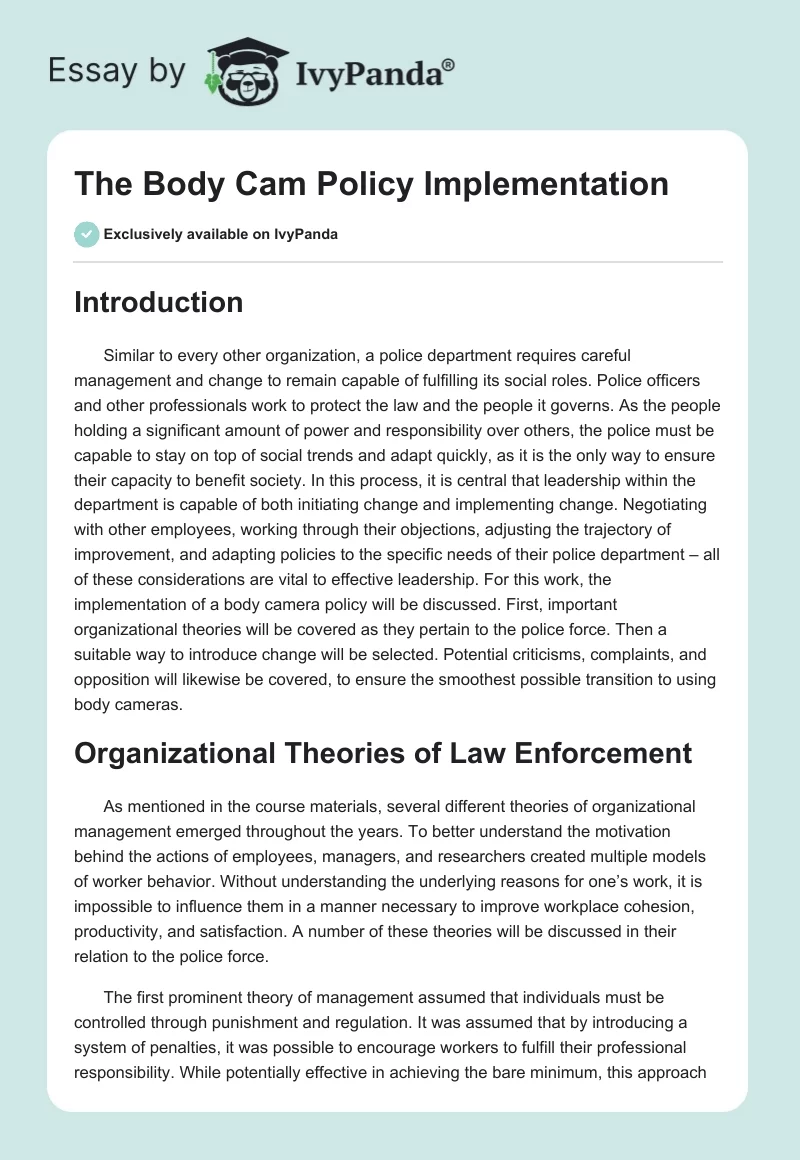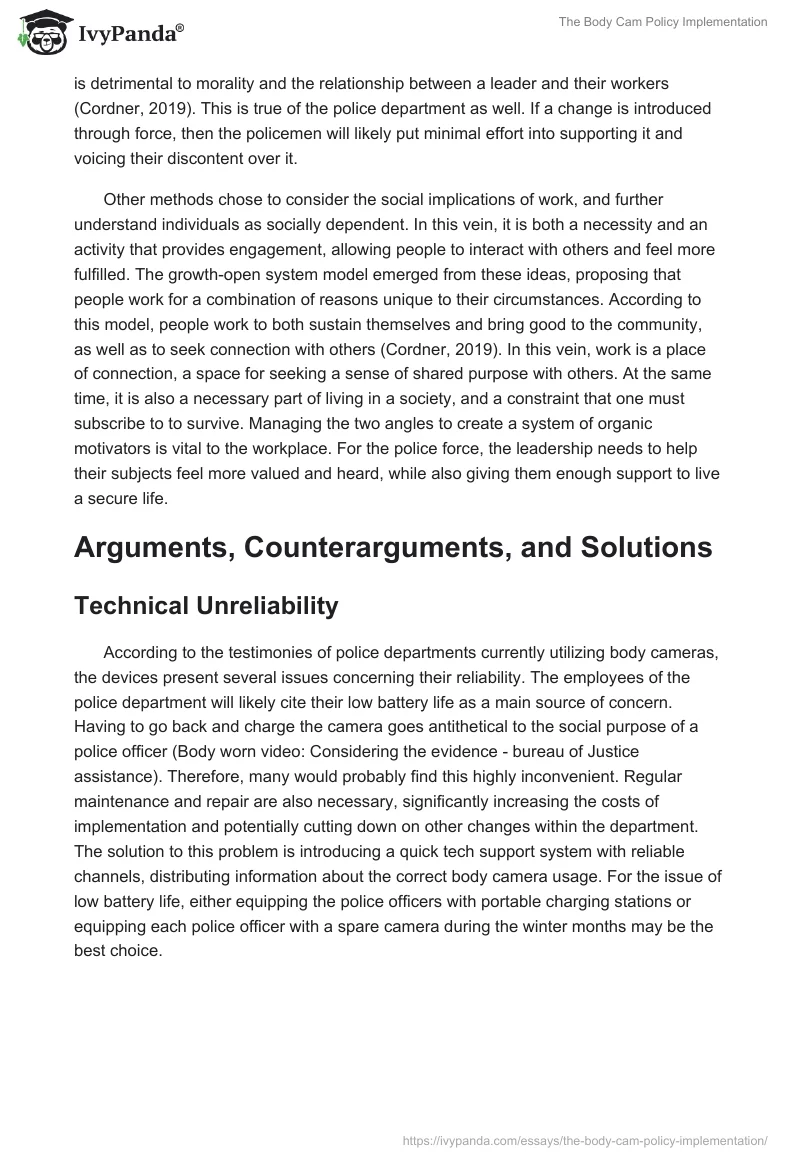Introduction
Similar to every other organization, a police department requires careful management and change to remain capable of fulfilling its social roles. Police officers and other professionals work to protect the law and the people it governs. As the people holding a significant amount of power and responsibility over others, the police must be capable to stay on top of social trends and adapt quickly, as it is the only way to ensure their capacity to benefit society. In this process, it is central that leadership within the department is capable of both initiating change and implementing change. Negotiating with other employees, working through their objections, adjusting the trajectory of improvement, and adapting policies to the specific needs of their police department – all of these considerations are vital to effective leadership. For this work, the implementation of a body camera policy will be discussed. First, important organizational theories will be covered as they pertain to the police force. Then a suitable way to introduce change will be selected. Potential criticisms, complaints, and opposition will likewise be covered, to ensure the smoothest possible transition to using body cameras.
Organizational Theories of Law Enforcement
As mentioned in the course materials, several different theories of organizational management emerged throughout the years. To better understand the motivation behind the actions of employees, managers, and researchers created multiple models of worker behavior. Without understanding the underlying reasons for one’s work, it is impossible to influence them in a manner necessary to improve workplace cohesion, productivity, and satisfaction. A number of these theories will be discussed in their relation to the police force.
The first prominent theory of management assumed that individuals must be controlled through punishment and regulation. It was assumed that by introducing a system of penalties, it was possible to encourage workers to fulfill their professional responsibility. While potentially effective in achieving the bare minimum, this approach is detrimental to morality and the relationship between a leader and their workers (Cordner, 2019). This is true of the police department as well. If a change is introduced through force, then the policemen will likely put minimal effort into supporting it and voicing their discontent over it.
Other methods chose to consider the social implications of work, and further understand individuals as socially dependent. In this vein, it is both a necessity and an activity that provides engagement, allowing people to interact with others and feel more fulfilled. The growth-open system model emerged from these ideas, proposing that people work for a combination of reasons unique to their circumstances. According to this model, people work to both sustain themselves and bring good to the community, as well as to seek connection with others (Cordner, 2019). In this vein, work is a place of connection, a space for seeking a sense of shared purpose with others. At the same time, it is also a necessary part of living in a society, and a constraint that one must subscribe to to survive. Managing the two angles to create a system of organic motivators is vital to the workplace. For the police force, the leadership needs to help their subjects feel more valued and heard, while also giving them enough support to live a secure life.
Arguments, Counterarguments, and Solutions
Technical Unreliability
According to the testimonies of police departments currently utilizing body cameras, the devices present several issues concerning their reliability. The employees of the police department will likely cite their low battery life as a main source of concern. Having to go back and charge the camera goes antithetical to the social purpose of a police officer (Body worn video: Considering the evidence – bureau of Justice assistance). Therefore, many would probably find this highly inconvenient. Regular maintenance and repair are also necessary, significantly increasing the costs of implementation and potentially cutting down on other changes within the department. The solution to this problem is introducing a quick tech support system with reliable channels, distributing information about the correct body camera usage. For the issue of low battery life, either equipping the police officers with portable charging stations or equipping each police officer with a spare camera during the winter months may be the best choice.
Conclusion
Another issue that some police officers face is that the implementation of the body camera policy was not correctly negotiated with their unions. Currently there are news reports of departments that are fighting with their respective police unions over the specificities of created contracts. The terms and conditions of body camera use were not properly relayed to the employees, and the unions did not have enough say in how the policy will be implemented. This problem has a clear and direct solution – including union representatives in the process of negotiating camera usage and giving them the ability to state their case on the matter. Unionized policemen are an important and large part of the force, and their rights must be properly respected by the workplace.
References
Body worn video: Considering the evidence – bureau of justice assistance. (n.d.).
Cordner, G. W. (2019). Police administration. Routledge.


